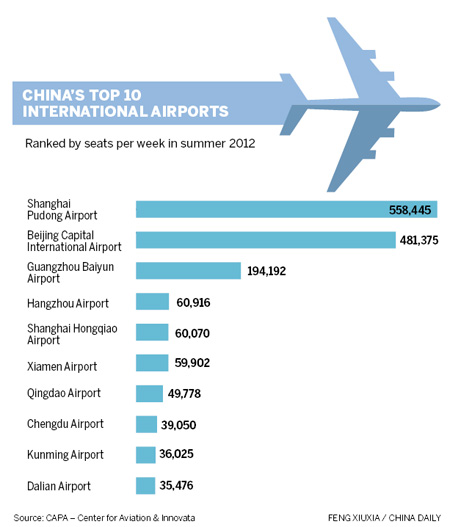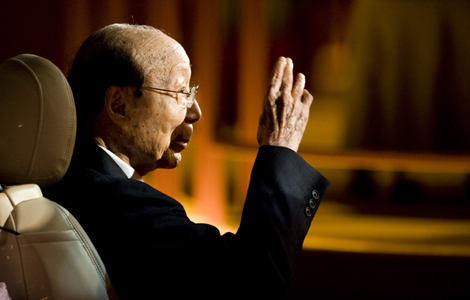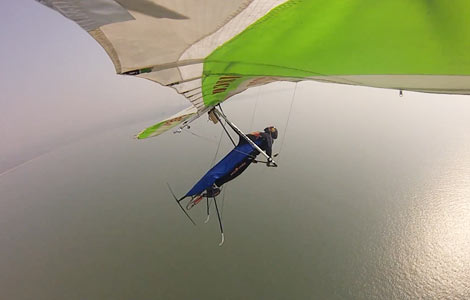Ready for take-off?
Updated: 2014-01-13 02:19
By TODD BALAZOVIC and WANG WEN (China Daily)
|
|||||||||||

At the Zhengzhou international airport in the capital of Henan province, a city most recognized in the West as a production center for Apple products, growth in passenger rates is almost double the national average, hitting 13 percent in 2012.
"It is definitively an asset to have direct flights into second-tier cities with a strong demand. It makes our global network even stronger," Christen of Lufthansa says. "It allows the passenger to fly directly to and from Europe without having to change aircraft."
Despite an eagerness to explore the untapped potential of China's more remote regions, many airlines are expressing caution about starting new routes.
Establishing a flight to a new city is a multi-million-dollar gamble. A standard route operating with a Boeing 767, which can carry 220 passengers, can cost an airline up to $50 million per year to operate, requiring more than 120,000 passengers per year to break even.
That price tag is slightly lower for international carriers traveling to second-tier cities, with many local governments offering subsidies to airlines to establish international routes to help bring investment and tourism to the city.
In 2012, more than 600 million yuan ($99 million) in subsidies were offered by 18 Chinese cities to airlines willing to establish international routes.
And while subsidies may offer a head start for a new flight path, when the funding stops, airlines are occasionally left with a tough decision — fold the flight or risk running into the red.
This was the choice Air France faced early last year. After running its Paris-Wuhan, Hubei province, route for two years, the carrier decided to reduce its frequency from three times a week to two, after considering canceling the flight altogether.
According to one French newspaper, Air France was being offered about 30,000 euros per flight by the local government to the capital of Central China's Hubei province.
Although many airlines are eager to expand, China's current air regulations and infrastructure are already feeling the strain. Beijing Capital International Airport, which opened its third terminal in 2008 for the Beijing Olympics, is the second-busiest airport in the world, handling 82 million passengers per year. The busiest, Hartsfield-Jackson International Airport in Atlanta, Georgia, sees 95 million passengers annually.
Shanghai Pudong and Hongqiao airports are not far behind, handling a combined 80 million passengers last year, according to reports from the Center for Asia-Pacific Aviation.
Guangzhou Baiyun International Airport expects to handle 52 million passengers this year, compared with just 20 million when the airport opened in 2004.
Combined, these three cities account for 31 percent of the total air traffic in China.
While airports and airlines generally welcome high passenger numbers, coordinating such traffic often comes with a host of problems, largely resulting in unexpected flight delays.
Related Stories
Weihai launches the first direct flight to Taiwan 2014-01-08 16:52
Flights of fancy 2014-01-12 01:35
Beijing-to-Bali direct flights scheduled 2013-12-30 11:02
Tigerair launches direct flights to Ningbo 2013-12-26 17:14
Direct flight launched between Doha, Hangzhou 2013-12-20 18:07
Today's Top News
Unexpected sharp fall in tourism hits Beijing
Japan tries to justify Abe's shrine visit
Ground control to Major Tang
Int'l air carriers seeks China share
Apology letter showed goodwill toward China
Iran nuclear deal to take effect
Sharon's death triggers mixed reactions
Former Israeli PM Ariel Sharon dead at 85
Hot Topics
Lunar probe , China growth forecasts, Emission rules get tougher, China seen through 'colored lens', International board,
Editor's Picks

|

|

|

|

|

|





